The SkySat Constellation at Planet
By Jon Engelsman
April 23, 2018
The history and technical specifications behind SkySat, the world's largest constellation of high-resolution imaging satellites providing commercial satellite imagery and HD video since 2013.
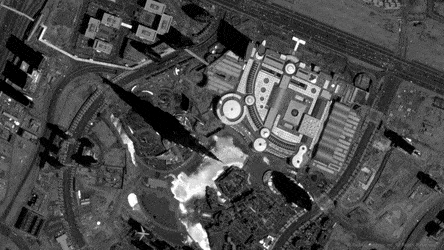
History of SkySat
The SkySat constellation was originally proposed by Skybox Imaging, a remote-sensing startup founded in 2009. In 2010, they received a license for the operations of a private space-based remote sensing system from NOAA.
Skybox Imaging launched the first satellite in the constellation (SkySat-1) in November 2013 on a Russian Dnepr rocket, followed by the launch of SkySat-2 on a Soyuz 2 rocket in July 2014. Both of these satellites were built by Skybox Imaging in-house, however prior to the launch of SkySat-2, they signed a deal with Space Systems/Loral (SSL) in February 2014 to build thirteen upgraded imaging satellites, referred to as SkySat-C’s.
In June 2014, Skybox Imaging and the SkySat constellation was acquired by Google for $500 million, and eventually renamed Terra Bella in March 2016. A few months later, the first of the upgraded SkySat-C satellites from SSL (SkySat-3 aka SkyCat C-1) was launched in June 2016 on an Indian PSLV rocket. Four more SkySat-C satellites (SkySat 4-7 aka SkySat C-2 to C-5) soon followed, launched on an Arianespace Vega rocket in September 2016. By the end of 2016, Terra Bella was operating a total of seven SkySat satellites.
Google announced in January 2017 that they would sell off Terra Bella and its SkySat constellation to Planet, a remote-sensing start-up founded in 2010. The financial details were never disclosed, but the deal was originally estimated at $300 million, although it also included terms for Google to acquire satellite imagery from Planet in a multi-year contract.
Planet’s annual FCC filing from June 2017 highlighted the SkySat constellation and their respective orbits (as of May 2017) under the FCC callsign S2862.

A second table showed the planned launch of six additional SkySat satellites in October 2017.

True to the FCC filing, later that year six additional SkySat-C satellites were launched on an Orbital ATK Minotaur-C rocket in October 2017. That launch brought the SkySat constellation up to its current total of thirteen satellites, including the two Skybox Imaging-built satellites (SkySat-1 and SkySat-2) and eleven of the upgraded SSL-built SkySat-C satellites.
The last two SkySat-C satellites, from Skybox Imaging’s 2014 deal with SSL for thirteen satellites, were planned to launch on a SpaceX Falcon 9 in Q2 2018 according to Planet’s 2017 FCC filing, but the current launch status of those satellites is unknown.
SkySat Technical Specifications
SkySat-1 and SkySat-2
SkySat-1 and SkySat-2 are nearly identical microsatellites built in-house by SkyBox Imaging.
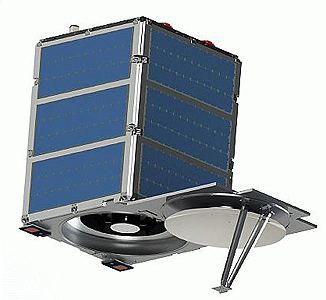 Gunter's Space Page
Gunter's Space Page
Some specifications for these satellites can be found in Skybox Imaging’s FCC authorization milestones and are provided in the table below.
| SkySat-1 & SkySat-2 | |
|---|---|
| Manufacturer | Skybox Imaging |
| Orbit | ~600 km Polar-Inclined, Circular |
| Weight | ~80 kg |
| Star Trackers | 2x ST-16’s (Sinclair Interplanetary) |
| Reaction Wheels | 4x MW200’s (MSCI) |
| Torque Rods | 3x TQ-15’s (Sinclair Interplanetary) |
| Propulsion | None |
| Solar Panels | SP-C Panels (SpaceQuest) |
| Optics | L-3 Integrated Optic Systems (L3-IOS)* |
| Sensor | Triple Ring Technologies (TRT)* |
*Specific part models unknown
Additional details of the originally proposed SkySat-1 and SkySat-2 satellites and support infrastructure is found in Skybox Imaging’s 2012 application to the FCC for a satellite space station authorization ( Form 312 and the FCC’s approval).
SkySat-C (SkySat 3-13)
SkySat’s 3-13 are an upgraded, slightly larger satellite platform (SkySat-C) and were built by SSL. These upgraded satellites include propulsion systems for orbital maneuvering, along with improved reaction wheels and improved imaging capabilities.
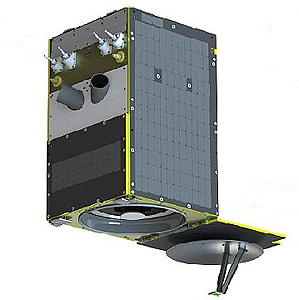 Gunter's Space Page
Gunter's Space Page
| SkySat C (SkySat 3-13) | |
|---|---|
| Manufacturer | Space Systems/Loral (SSL) |
| Orbit | ~500 km Polar-Inclined, Circular |
| Weight | ~120 kg |
| Star Trackers | 2x ST-16’s (Sinclair Interplanetary) |
| Reaction Wheels | 4x RW3-1.0’s (Millenium Space Systems) |
| Torque Rods | 3x TQ-15’s ( SpaceFlight Industries) |
| Propulsion | 4x 1N HPGP Thrusters ( ECAPS) |
| Solar Panels | ? |
| Optics | ? |
| Sensor | ? |
The addition of a propulsion system provides the SkySat-C satellites with orbital maneuvering capability. This propulsion system uses four 1N High Performance Green Propulsion (HPGP) thrusters provided by Bradford ECAPS.
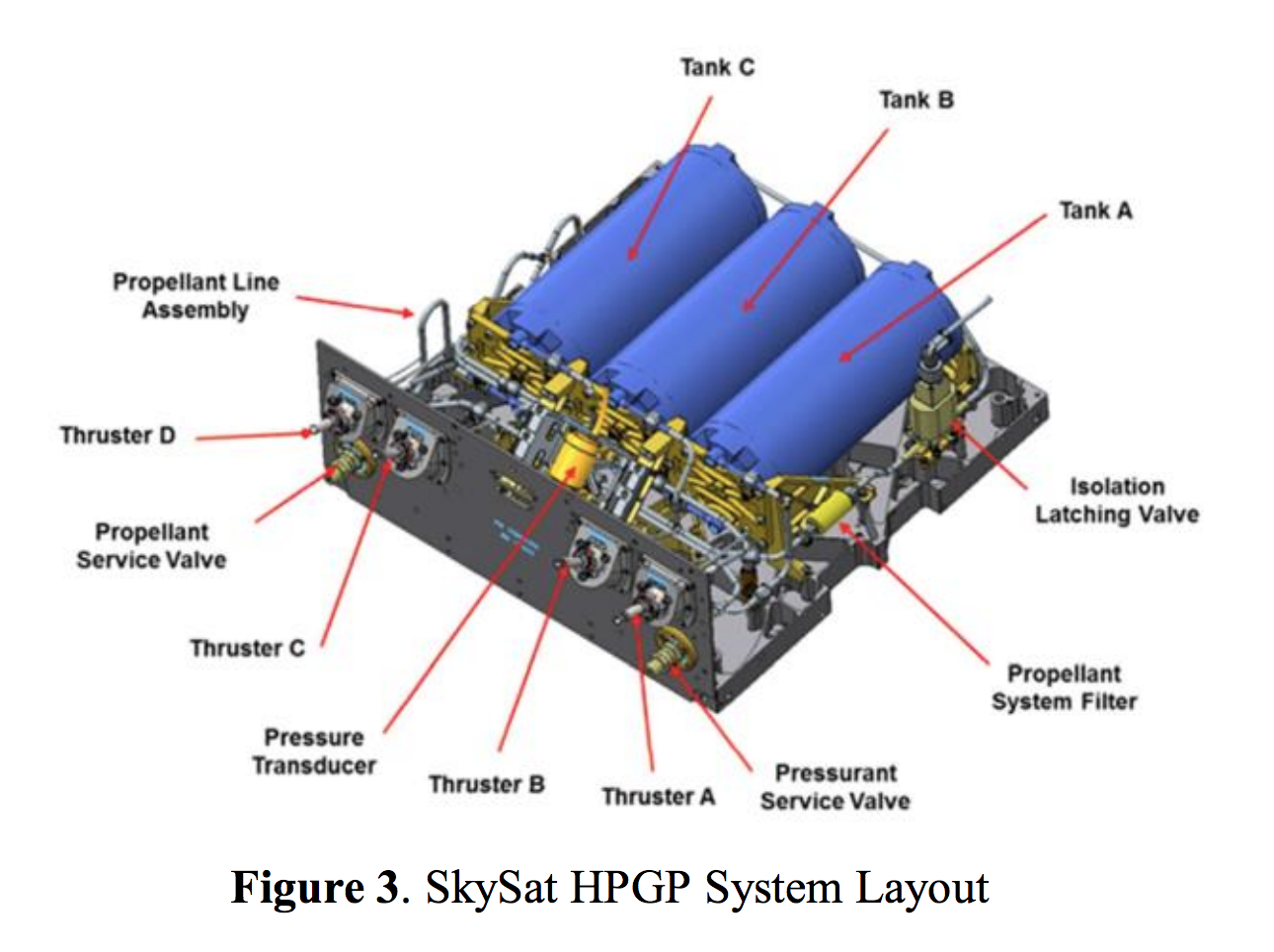 31st Annual AIAA/USU Conference on Small Satellites
31st Annual AIAA/USU Conference on Small Satellites
 Bradford ECAPS
Bradford ECAPS
Imagery from SkySat
The SkySat constellation plays a pivotal role in the “tip-and-cue” observation platform that Planet has built up with its Dove, RapidEye and SkySat constellations. Providing over 300 million square kilometers of imagery at 3-5 meters resolution, the Dove and RapidEye constellations allow monitoring of temporal changes over large geographic areas, “tipping” analysts to points-of-interest that can then be “cued” for higher-resolution imaging by the SkySat constellation.
To do this, the SkySat constellation provides sub-meter imagery for 185,000 square kilometers per day under Planet’s High Resolution Monitoring product. The current imagery capabilities of the constellation are provided by Planet in the table below (although details for SkySat 8-13 are currently omitted).
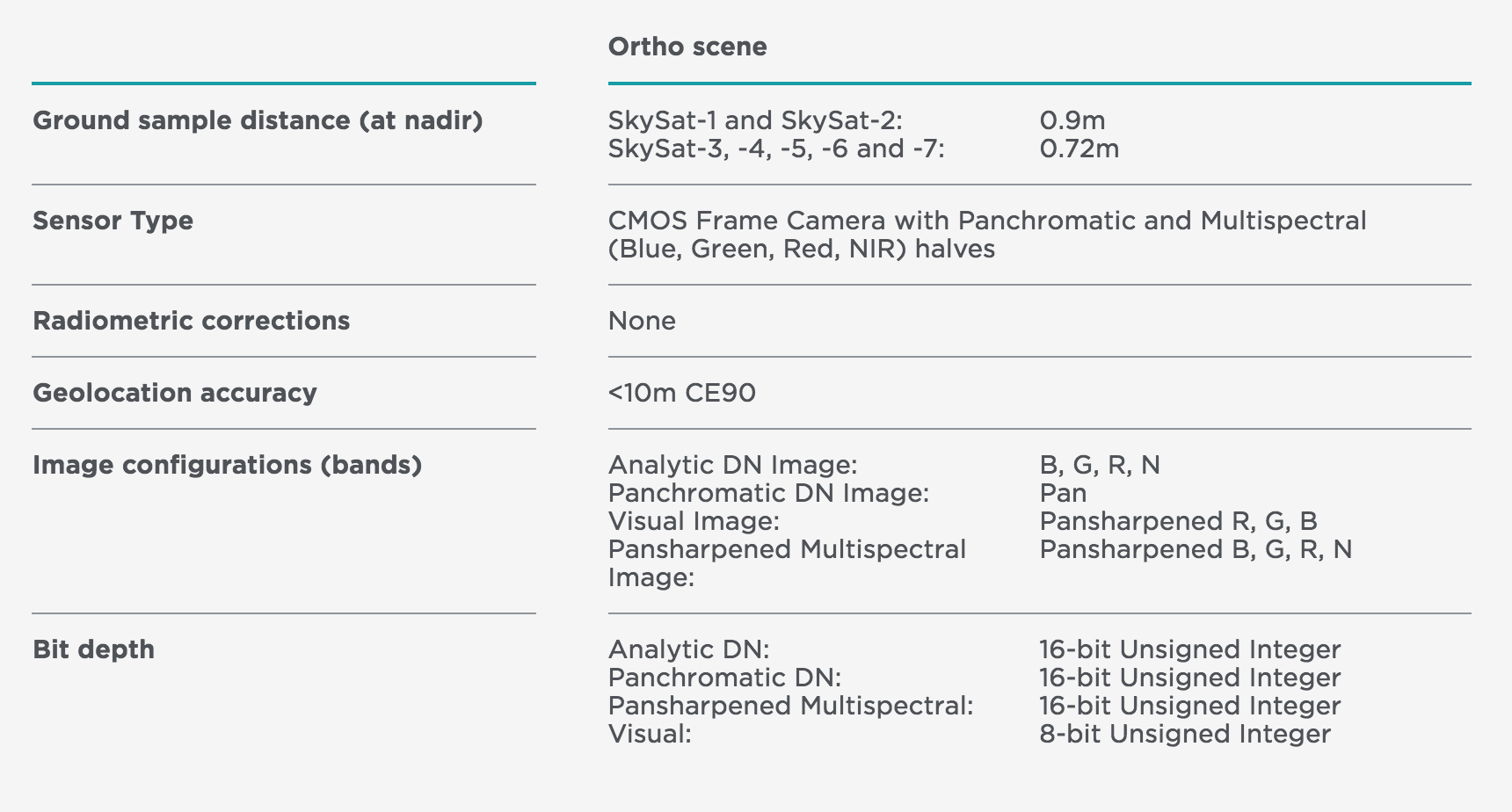 Planet
Planet
SkySat satellites are also capable of providing over 2 minute clips of full-motion video, becoming the world’s first commercial satellites to provide video from space back when SkySat-1 first launched in 2013.
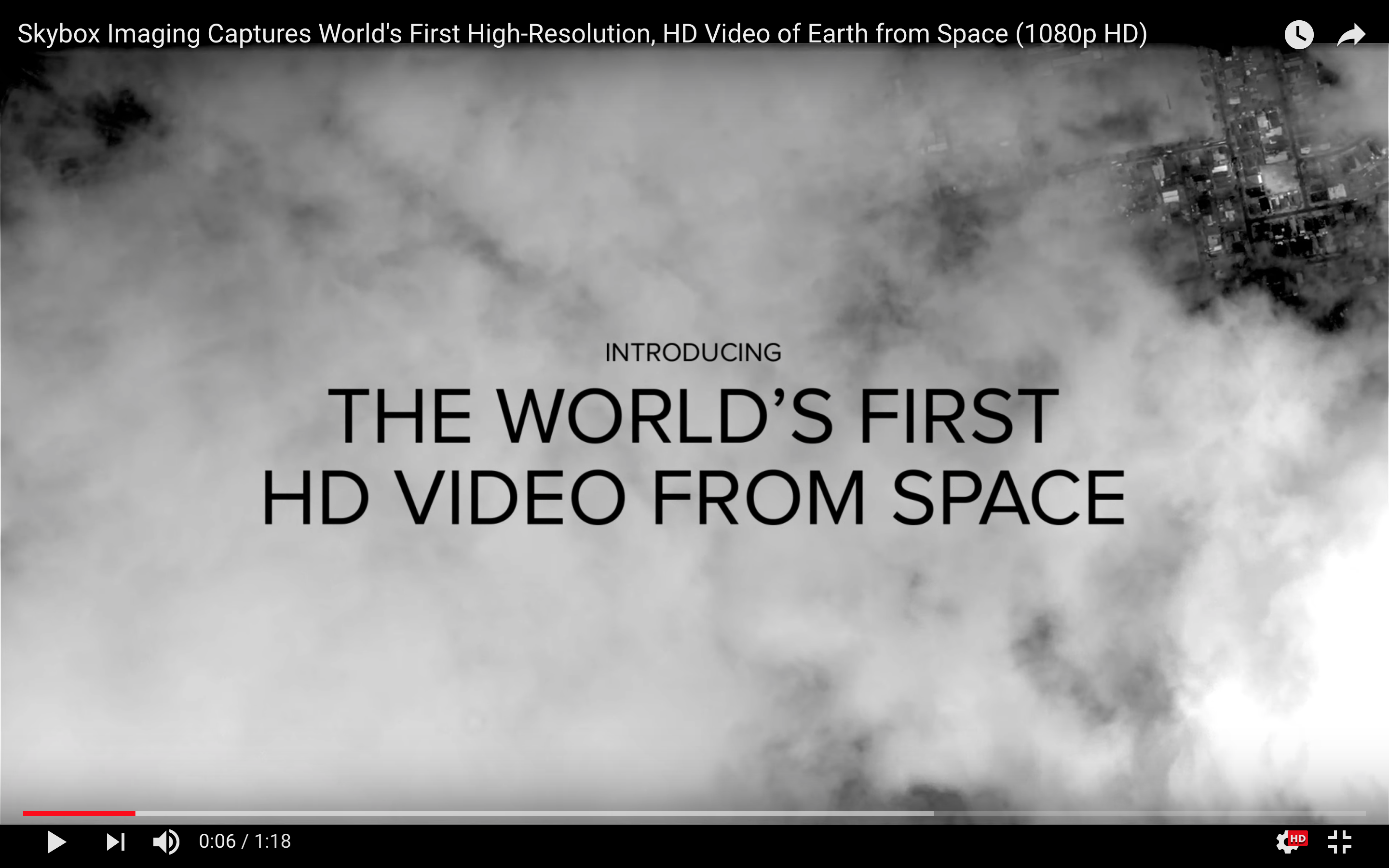
Planet co-founder Will Marshall recently tweeted a video that shows a seaplane landing in the water outside Vancouver, Canada, highlighting SkySat’s impressive HD video capabilities.

After Planet’s acquisition of Terra Bella in early 2017, Planet worked towards integrating SkySat imagery into their data infrastructure, and announced the availability of SkySat imagery via their Planet API in September 2017.
Recently, Planet has been publicly highlighting case studies using SkySat high-resolution imagery, including the monitoring of illegal North Korean coal exports and a beautiful series of oblique, off-nadir images of different cities and landscapes around the world.
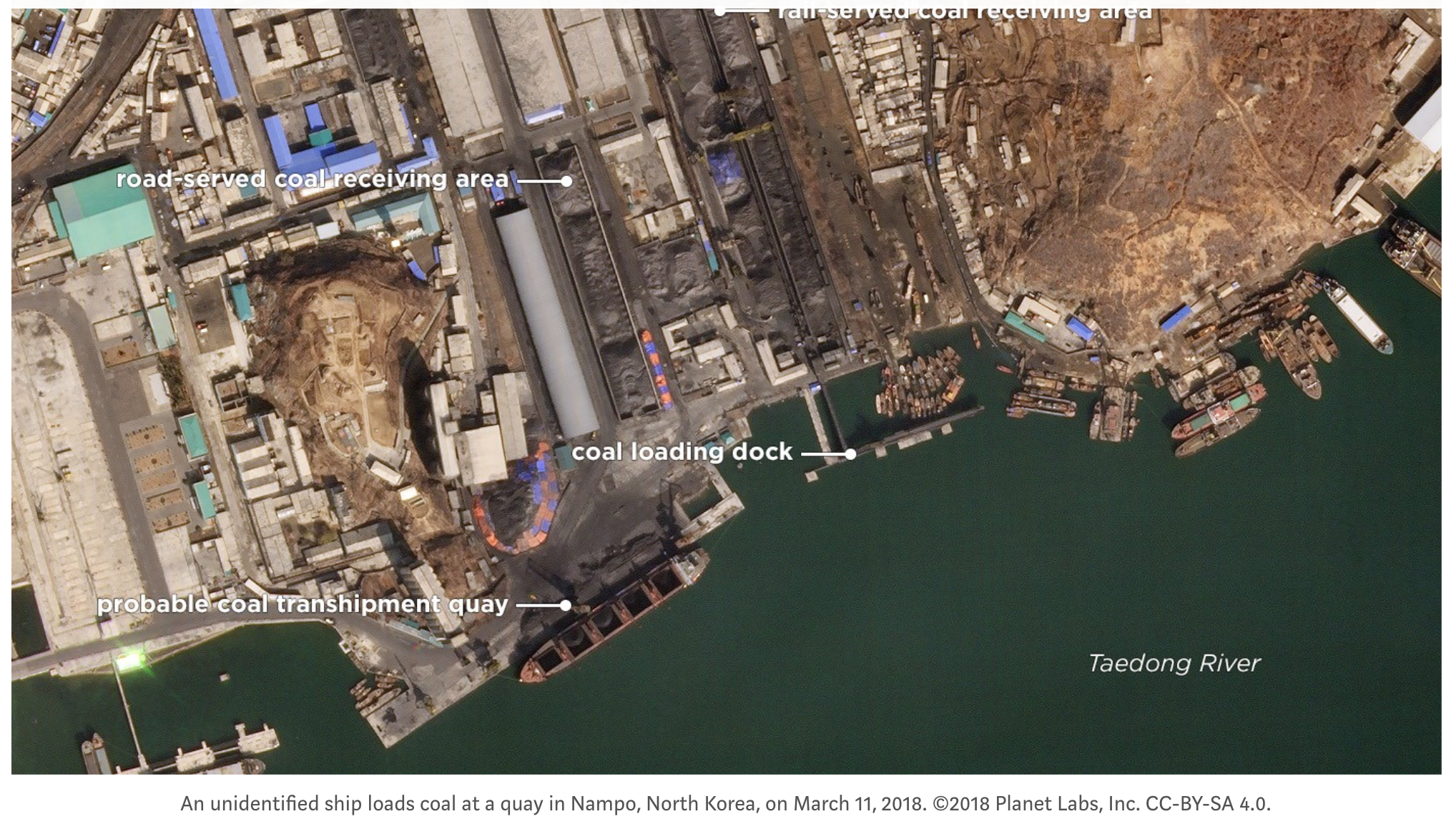 Planet Stories
Planet Stories
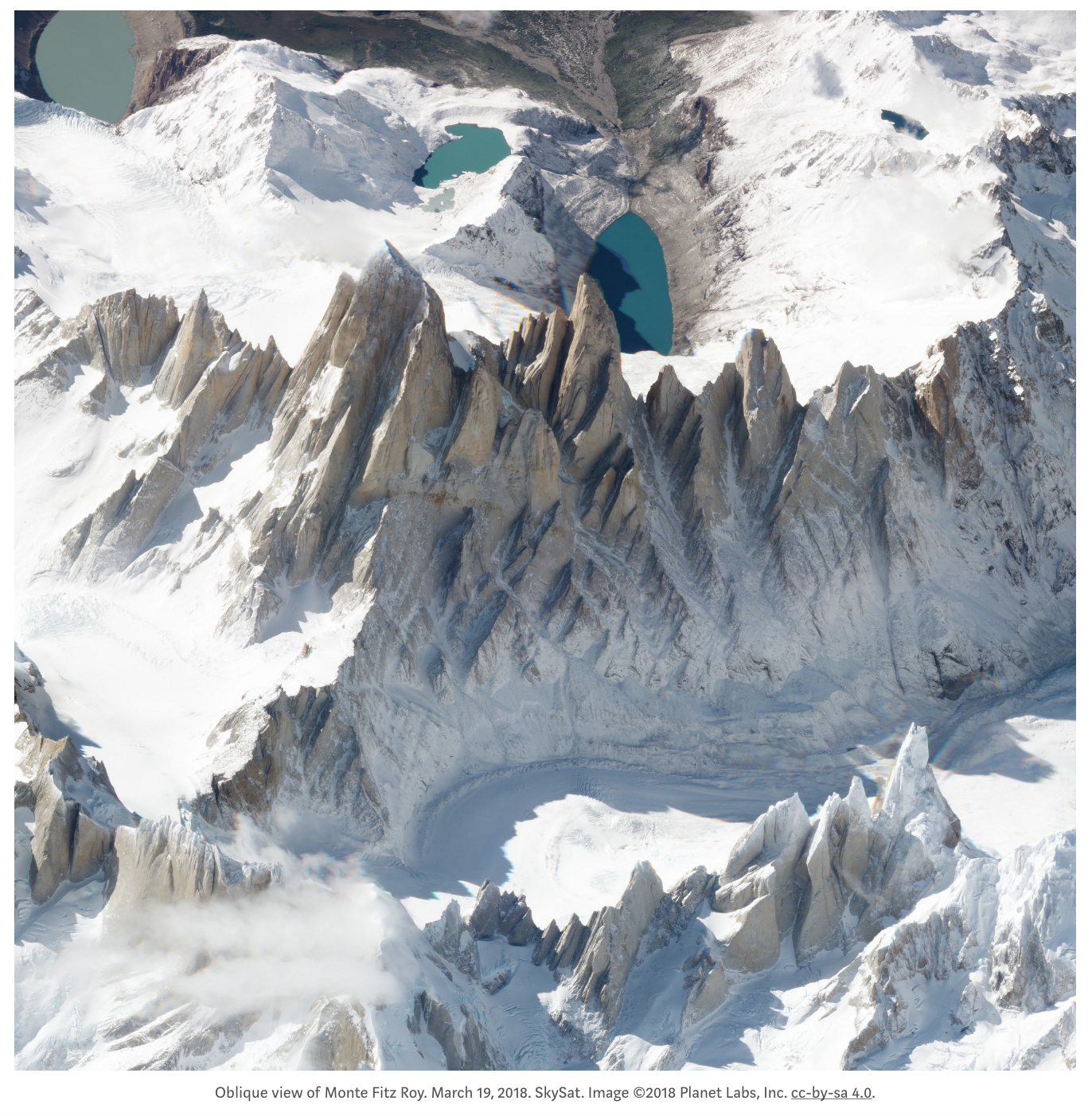 Planet Stories
Planet Stories
One of Planet’s data visualization specialists, Rob Simmons, has recently posted some tutorials on working with SkySat imagery, as part of a ‘Making Sense of Satellite Data, An Open Source Workflow’ series. This tutorial highlights how to manipulate sample SkySat using the open-source GIS program QGIS.
Future of SkySat
Launched in 2013 and 2014, SkySat-1 and SkySat-2 have estimated operational lives of roughly six to ten years and will reach their end-of-mission sometime between 2019-2020 at the earliest. The eleven SkySat-C satellites have an increased expected operational life of at least 10 years due to their orbital maneuvering capabilities, although they will likely be able to provide imagery for much longer.
However, Planet has not disclosed any future plans for the SkySat constellations. An article from 2016 indicated an expected SkySat constellation of twenty-one total satellites by the end of 2017, according to then-Terra Bella, but that timeline has come and gone.
A 2017 presentation by the manufacturer of the SkySat-C HGPG propulsion system indicated that eight additional SkySat satellites would be launched starting in 2018. And in December 2017, SSL confirmed that eleven of their contracted SkySat satellites are in orbit and that there are “ eight more for Planet still under construction at SSL’s smallsat manufacturing facility”. While no launch dates have been publicly announced, eight additional satellites would bring Planet’s SkySat constellation up to a total of twenty-one satellites, which would indicate that Planet is following Skybox/Terra Bella’s original plan.
For now, it seems that Planet will continue investing in the SkySat constellation as their primary high-resolution capability by building and launching additional SkySat satellites, but it’s unknown if the constellation will grow beyond the planned twenty-one satellites, or whether Planet will start investing in a next-generation high-resolution platform to succeed SkySat.